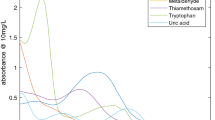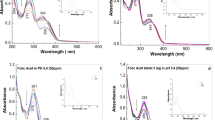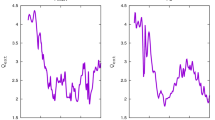Abstract
WE have recently completed an examination of the infra-red absorption spectra of the monoxide and dioxide of chlorine. The unstable nature of these substances demanded the use of a monochromator method: this has the additional advantage of an increased purity of spectrum, but even under these conditions there is a considerable amount of scattered radiation in the region of longer wave-lengths. We have endeavoured to take advantage of the alteration in the chromatic foci of rocksalt to stop out most of the scattered light, but owing to the lack of transparency of this substance beyond 18μ (the optical train included rocksalt lenses and plates for the absorption cells and thermopile case), we obtained no measurable deflections on the galvanometer. The provision of optical parts of potassium bromide should eventually solve this difficulty. The observed bands for ClO2 are recorded in the accompanying Table.
This is a preview of subscription content, access via your institution
Access options
Subscribe to this journal
Receive 51 print issues and online access
$199.00 per year
only $3.90 per issue
Buy this article
- Purchase on Springer Link
- Instant access to full article PDF
Prices may be subject to local taxes which are calculated during checkout
Similar content being viewed by others
References
Phys. Rev., 38, 2131; 1931.
Z. Phys., 73, 1 and 565; 1932.
Author information
Authors and Affiliations
Rights and permissions
About this article
Cite this article
BAILEY, C., CASSIE, A. Infra-Red Absorption Spectra of the Oxides of Chlorine. Nature 129, 652–653 (1932). https://doi.org/10.1038/129652b0
Issue Date:
DOI: https://doi.org/10.1038/129652b0
Comments
By submitting a comment you agree to abide by our Terms and Community Guidelines. If you find something abusive or that does not comply with our terms or guidelines please flag it as inappropriate.



